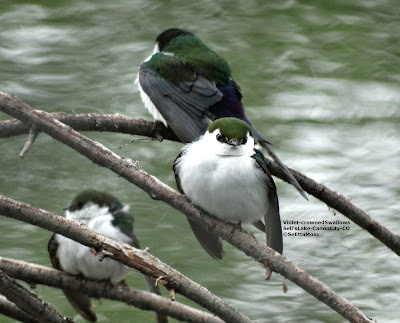Feral cat predation on birds--new research
(Washington, D.C., December 8, 2010) A new, peer-reviewed study report titled, Feral Cats and Their Management from the University of Nebraska—Lincoln, has put the annual economic loss from feral cat predation on birds in the United States at $17 billion. The report analyzes existing research on management of the burgeoning feral cat population – over 60 million and counting -- in the United States, including the controversial practice of Trap, Neuter, Release (TNR).
“This report is a must read for any community or government official thinking about what to do about feral cats. It encapsulates the extensive research on this subject and draws conclusions based on that data. Not surprisingly, the report validates everything American Bird Conservancy has been saying about the feral cat issue for many years, namely TNR doesn’t work in controlling feral cat populations,” said Darin Schroeder, Vice President for Conservation Advocacy for American Bird Conservancy, the nation’s leading bird conservation organization.
“Communities seeking a solution to their feral cat problems need to consider the science on the issue and the well being of animals impacted by feral cats as well as the cats themselves. These other animals – birds especially – don’t deserve to die at the hands of a predator introduced into their environment by irresponsible pet owners. A humane decision-making process on this issue must also recognize that feral cats live short, miserable lives because of disease, other predators, severe weather and traffic hazards. Thus their life expectancy is about one third as long as owned cats,” Schroeder added.
A key finding of the report was the statement by the authors that they do not recommend the TNR method to eliminate colonies of feral cats. In their extensive research, they were unable to find a single real-world example of TNR succeeding in eliminating a feral cat colony.
Some of the many findings of the report include:
“This report is a must read for any community or government official thinking about what to do about feral cats. It encapsulates the extensive research on this subject and draws conclusions based on that data. Not surprisingly, the report validates everything American Bird Conservancy has been saying about the feral cat issue for many years, namely TNR doesn’t work in controlling feral cat populations,” said Darin Schroeder, Vice President for Conservation Advocacy for American Bird Conservancy, the nation’s leading bird conservation organization.
“Communities seeking a solution to their feral cat problems need to consider the science on the issue and the well being of animals impacted by feral cats as well as the cats themselves. These other animals – birds especially – don’t deserve to die at the hands of a predator introduced into their environment by irresponsible pet owners. A humane decision-making process on this issue must also recognize that feral cats live short, miserable lives because of disease, other predators, severe weather and traffic hazards. Thus their life expectancy is about one third as long as owned cats,” Schroeder added.
A key finding of the report was the statement by the authors that they do not recommend the TNR method to eliminate colonies of feral cats. In their extensive research, they were unable to find a single real-world example of TNR succeeding in eliminating a feral cat colony.
Some of the many findings of the report include:
• Feral cats are invasive and pose a threat to native fauna and public health.Click for Feral Cat Report
• Three separate studies showed that most feral cats (62 to 80 percent) carry the parasite responsible for toxoplasmosis – a condition of special concern to pregnant women.
• Cats are responsible for the extinction of at least 33 species of birds.
• Feral cats kill an estimated 480 million birds in the U.S. each year (the study did not address the question of bird predation by owned cats. Studies suggest that there are 80 million owned cats in the U.S. and that 43 percent have access to the outdoors. Total cat predation on birds is likely around one billion birds per year, though some analyses suggest much higher figures.)
• Feeding feral cats encourages them to congregate which encourages the chances of diseases being transmitted.
• The supplemental feeding of feral cats should be prohibited.
• Cats kill far more native wildlife species than nuisance (invasive) species.
• Cats will kill wildlife no matter how well they are fed.
• One reference to TNR success claimed that one particular feral cat colony numbered 920 cats before TNR, and then 678 after. However, when migrations and births were factored in, the colony had actually increased in size -- to 983 cats.
• The life expectancy of a feral cat is 3-5 years as opposed to 15 years for owned cats.


Comments